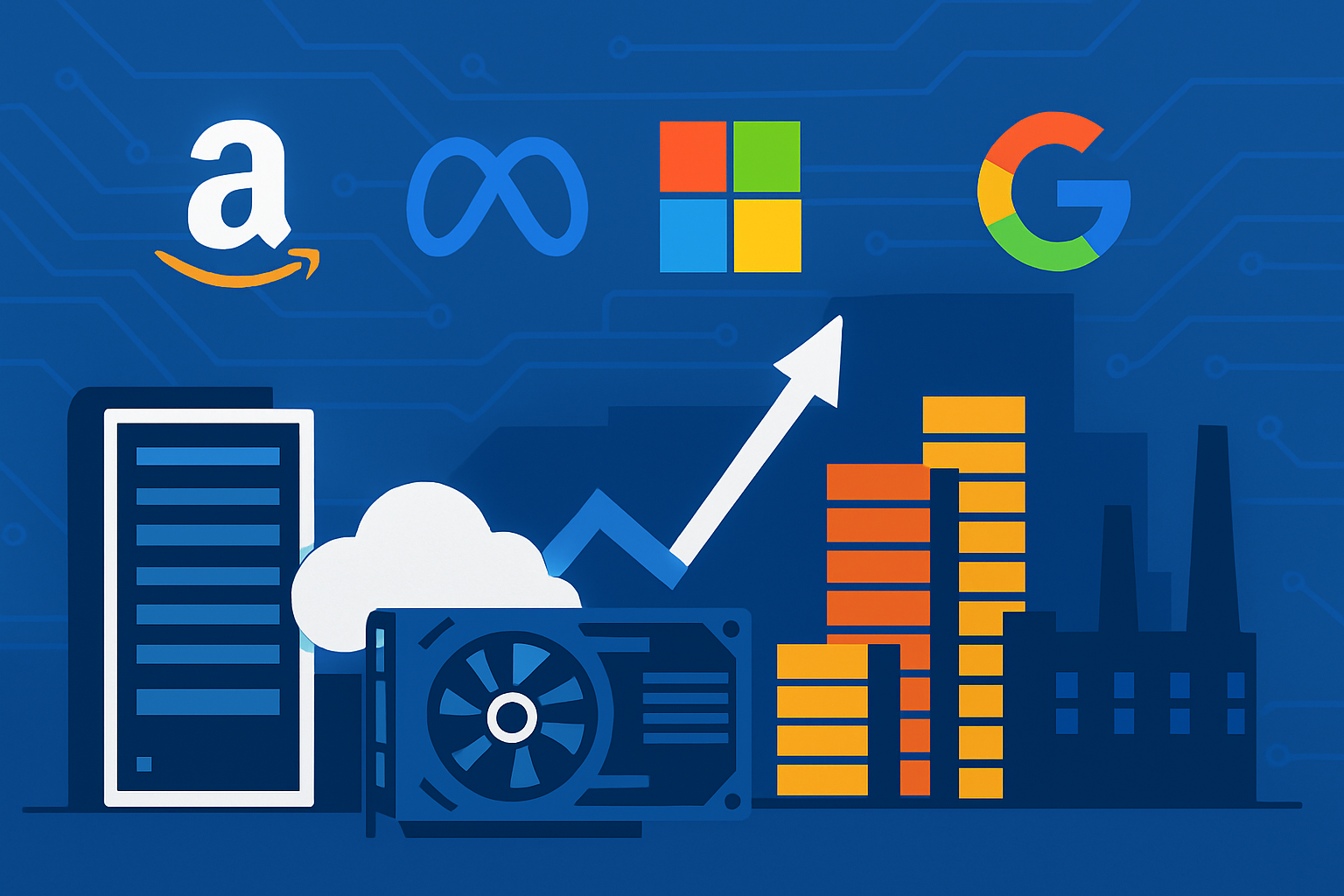The AI arms race is accelerating at breakneck speed — and Big Tech’s latest spending spree is leaving even seasoned investors wondering whether the sector is heading toward a historic boom or an unsustainable bubble.
Amazon, Meta, Microsoft, and Google have collectively pledged over $320 billion in capital expenditure for 2025, with the lion’s share earmarked for AI data centers, GPU clusters, and cloud infrastructure, according to Business Insider. That’s nearly double the estimated $170 billion invested in 2024 — a staggering leap even by Silicon Valley standards.
While this unprecedented commitment underscores long-term faith in the transformative potential of artificial intelligence, it also raises a pressing question for markets: can revenues and real-world adoption keep pace with the infrastructure explosion?
A Spending Race Without an Off Switch
The scale of spending is unlike anything seen since the early-2000s dot-com infrastructure rush. Amazon Web Services (AWS) alone is forecast to invest more than $120 billion in 2025, while Microsoft’s AI-related capital expenditures are set to top $85 billion, driven by its deepening partnership with OpenAI.
Meta, which last year described AI as its “highest investment priority,” is pouring resources into custom silicon development and model training facilities, with CEO Mark Zuckerberg confirming a massive expansion of its U.S. data center footprint. Google, meanwhile, is accelerating its global data infrastructure rollout and power procurement for its Gemini AI suite.
But analysts are sounding early alarms. Goldman Sachs cautioned in a recent report that the “capex-to-revenue gap” for major tech players is widening faster than historical averages — a potential red flag for margin compression if AI demand doesn’t scale as quickly as anticipated.
Why It Matters for Investors
Investors have cheered Big Tech’s relentless push into AI, sending the Nasdaq 100 to record highs and adding trillions in market cap to companies riding the AI narrative. Yet beneath the optimism lies a structural challenge: power, cooling, and utilization constraints that could slow the payoff.
The International Energy Agency (IEA) estimates that data centers could consume 8% of global electricity by 2026, up from 4% in 2023 — a doubling in just three years. Many regions, including key U.S. and European hubs, are already grappling with grid limitations and permitting delays, putting timelines for AI deployment at risk.
“Capex growth is racing ahead of revenue visibility,” said UBS analyst Erika Najarian in a recent client note. “If enterprise AI adoption doesn’t accelerate meaningfully by 2026, the market could face a digestion phase — not unlike the telecom overbuild in the early 2000s.”
For now, Big Tech’s balance sheets remain strong enough to sustain the spending. But the real test will come when return on investment metrics — such as utilization rates, cloud pricing, and AI-as-a-service revenues — are fully revealed in upcoming quarterly reports.
Future Trends to Watch
The infrastructure boom has ripple effects across multiple sectors. Semiconductor makers like NVIDIA ($NVDA) and AMD ($AMD) continue to benefit from massive GPU orders, but analysts are beginning to question whether supply might soon outpace immediate demand.
Meanwhile, companies in power generation, cooling systems, and networking — such as Eaton ($ETN), Vertiv ($VRT), and Arista Networks ($ANET) — are emerging as secondary beneficiaries of the AI build-out. Conversely, colocation providers and hyperscalers may face margin pressures if utilization lags, leading to potential industry consolidation.
Smaller AI infrastructure players — including Super Micro Computer ($SMCI) and Marvell Technology ($MRVL) — could either thrive on niche opportunities or struggle amid price competition and hardware oversupply.
On the geopolitical front, U.S.–China tensions remain a wildcard. Washington’s ongoing export controls on advanced chips could constrain global supply chains, while nations like Japan and South Korea are moving to subsidize domestic AI fabrication and data center projects.
Key Investment Insight
This is a “build-out ahead of adoption” moment — reminiscent of how the early internet infrastructure paved the way for decades of digital growth. While short-term risks of oversupply and cost overruns are real, long-term investors who identify the right enablers of the AI ecosystem — semiconductors, energy infrastructure, and data management — could position themselves for substantial upside.
Investors should monitor upcoming earnings calls from Amazon, Microsoft, and Meta for updates on capex utilization rates and AI monetization strategies. A sharp divergence between investment and realized revenue could signal when the current infrastructure boom begins to cool.
As the AI revolution moves from hype to hardware, capital efficiency will become the new battleground. For now, the smartest investors are focusing less on who spends the most — and more on who spends the wisest.
Stay with MoneyNews.Today for the latest daily insights on how AI, technology, and global markets are reshaping the investment landscape.





